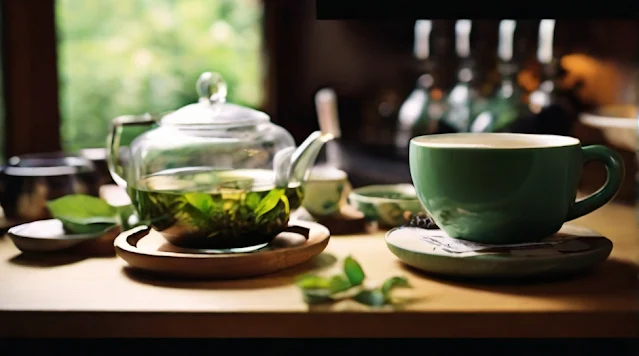Tea, a beloved beverage enjoyed by millions worldwide, has a rich history and a diverse array of types. Understanding the nuances of different teas and how to brew them enhances the overall tea-drinking experience. In this article, we'll delve into the various types of tea and their respective brewing methods, ensuring you can make the perfect cup every time.
Black Tea: A Bold Start
Overview and Origins
Black tea, known for its robust flavor, has a history dating back centuries. Originating from regions like China and India, black tea undergoes complete oxidation, resulting in its dark color and bold taste.
Flavor Profile and Characteristics
With bold, malty, and sometimes smoky flavors, black tea pairs well with milk and sugar. The depth of its taste makes it a popular choice for morning or afternoon consumption.
Brewing Techniques
To brew the perfect cup of black tea, use freshly boiled water and steep the leaves for 3-5 minutes. Adjust the steeping time based on your desired strength, and enjoy a hearty cup that awakens your senses.
Green Tea: Embracing Freshness
Origins and Processing
Green tea, originating from China and Japan, undergoes minimal oxidation, preserving its natural color and antioxidants. It boasts a delicate flavor profile with grassy and vegetal notes.
Health Benefits
Renowned for its health benefits, green tea is rich in antioxidants that may contribute to improved heart health and weight management. Its moderate caffeine content makes it a suitable choice for various occasions.
Brewing Tips
To brew green tea, use water just below boiling point and steep for 2-3 minutes. Be cautious not to over-brew, as it can result in a bitter taste. Savor the freshness with every sip.
Herbal Tea: Nature's Infusion
Ingredients and Varieties
Herbal tea, technically not a true tea as it doesn't come from the Camellia sinensis plant, offers a plethora of options. Ingredients like chamomile, peppermint, and hibiscus create diverse flavor profiles.
Health Benefits and Considerations
Herbal teas are often caffeine-free and may provide various health benefits, from aiding digestion to promoting relaxation. However, individuals should be mindful of potential allergies to specific herbs.
Brewing Methods
For herbal teas, steeping times and water temperatures vary. Experiment with different combinations to find your preferred infusion. Enjoy the soothing qualities of herbal blends.
White Tea: Delicate Simplicity
Minimal Processing and Delicate Flavor
White tea undergoes minimal processing, allowing the delicate flavors of the young tea leaves to shine through. Its subtle taste often carries floral and fruity notes.
Brewing Guidelines
To preserve white tea's delicate flavors, use water just below boiling and steep for 4-5 minutes. Appreciate the simplicity and elegance in each sip.
Brewing Methods: Crafting the Perfect Cup
Common Brewing Tools
Investing in quality teapots, infusers, and strainers enhances the brewing process. Choose tools that suit your preferences and make the experience enjoyable.
Step-by-Step Brewing Guide
- Choose the Right Tea Leaves: Opt for high-quality leaves for a richer flavor.
- Measuring Tea Leaves and Water: Follow recommended measurements to achieve the desired strength.
- Steeping Times for Different Teas: Refer to specific guidelines for black, green, herbal, and white teas.
Tea and Culture: A Global Affair
Global Tea Traditions
Tea holds cultural significance worldwide, with unique traditions such as Chinese tea ceremonies, English afternoon tea, and Japanese tea ceremonies. These rituals reflect the diversity of tea culture.
Pairing Tea with Food: A Culinary Symphony
Complementary Flavors
Pairing tea with food creates a delightful experience. Match black tea with rich desserts and explore savory pairings with green tea. The possibilities are vast, offering a symphony of flavors.
Benefits of Drinking Tea: Nourishing Body and Mind
Physical Health
The antioxidant properties of tea contribute to overall well-being, potentially aiding in heart health and weight management. Embrace the natural benefits of this ancient beverage.
Mental Well-being
Tea is not just a physical tonic but also a balm for the mind. Experience relaxation and stress relief while boosting cognitive function, making tea a holistic addition to your routine.
Conclusion: Sip, Savor, and Appreciate
In conclusion, understanding the different types of tea and their brewing methods elevates the enjoyment of this timeless beverage. Whether you prefer the boldness of black tea, the freshness of green tea, or the soothing nature of herbal and white teas, each cup tells a unique story. Sip, savor, and appreciate the nuances that make tea a cherished companion in daily life.
FAQs: Your Tea Queries Answered
How long should I steep black tea?
The ideal steeping time for black tea is 3-5 minutes, allowing for a robust flavor without bitterness.
Are there caffeine-free herbal tea options?
Yes, herbal teas are typically caffeine-free, making them an excellent choice for those looking to reduce caffeine intake.
Can I reuse tea leaves for a second steep?
Absolutely! Many high-quality tea leaves can be steeped multiple times, offering a different flavor profile with each infusion.
Is green tea the same as matcha?
While both come from the Camellia sinensis plant, green tea is loose leaves, while matcha is a powdered form of specially grown and processed green tea.
What is the best tea to drink for relaxation?
Herbal teas like chamomile or peppermint are popular choices for relaxation due to their soothing properties.


0 Comments